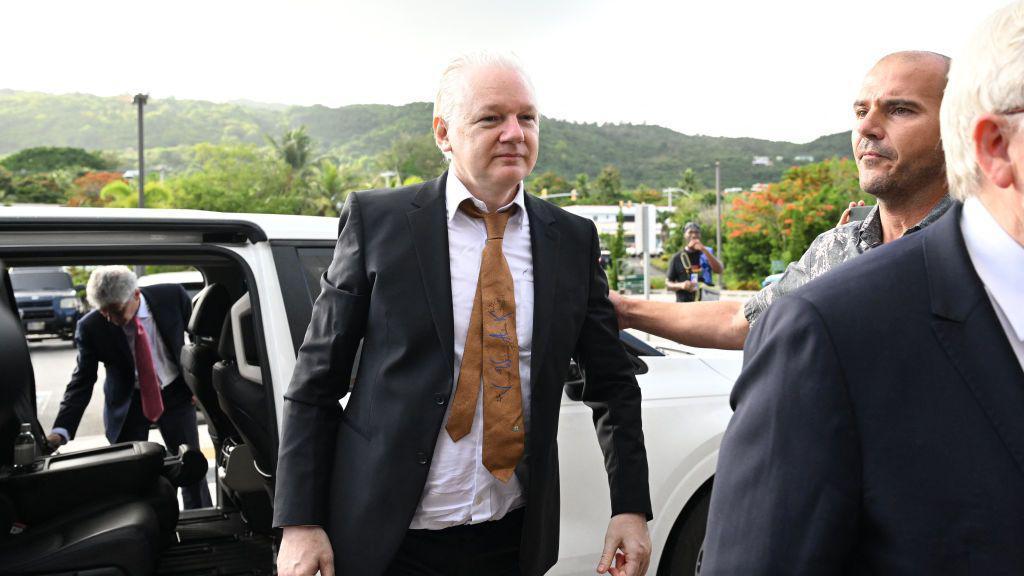
WHY A TINY PACIFIC ISLAND HOSTED JULIAN ASSANGE HEARING
When Julian Assange published a huge cache of leaked files in 2010 that provoked global uproar over US tactics in foreign conflicts, he could hardly have foreseen the long legal battle ahead would culminate on a remote ocean archipelago.
The Northern Mariana Islands is a string of tiny dots in the Pacific Ocean that until this week was known for its secluded beaches and wartime shipwrecks.
But it found itself on Wednesday briefly at the centre of a geopolitical chessboard whose pieces have been manoeuvring in the shadows for years from Washington DC to London and beyond.
Assange pleaded guilty in a court in Saipan, the capital of the US territory, before flying home to Australia.
The US has almost 100 district courts - but the one in Saipan is the country's smallest, its youngest and the farthest from the nation's capital.
The self-governing American commonwealth in the western Pacific was chosen due to Assange's opposition to travelling to the mainland US and for its proximity to his native Australia.
Situated around 3,000km (1,800 miles) north of Australia, the far-flung territory is made up of a cluster of 14 islands.
Similar to other territories like Guam or Puerto Rico, the islands are part of the US without being a formal state.
This means its roughly 50,000 residents are US citizens, but cannot vote in presidential elections.
The Northern Mariana Islands saw the fierce Battle of Saipan during World War Two and were taken over by the US after that conflict. It was previously a colony of Spain, Germany and Japan.
But the islands did not formally join the US until the late 20th Century.
In 1975, residents of the islands voted to join the US as a territory, and this status was formalised in 1986. The change gave them a permanent delegate in the US House of Representatives and awarded residents of the islands US citizenship.
As of 2020, about 60% of the island’s population were US citizens, while the remaining 40% were foreign workers, according to data from the US Government Accountability Office.
Its population is mostly of Asian descent, including 35% Filipinos. The second-largest demographic is people of Pacific Islander descent, including 24% Chamorro, according to the CIA’s World Factbook.
Saipan, the most populous city on the islands, is home to golf courses and sandy beaches that are a popular destination for tourists from Korea and China.
Part of the influx of Chinese tourism is due to the Northern Mariana Islands being the only place in the US that Chinese citizens can enter without a visa.
This has been a point of contention for some US lawmakers, who urged authorities last year to impose a visa requirement for Chinese visitors to the islands, citing national security reasons.
2024-06-26T02:30:53Z dg43tfdfdgfd